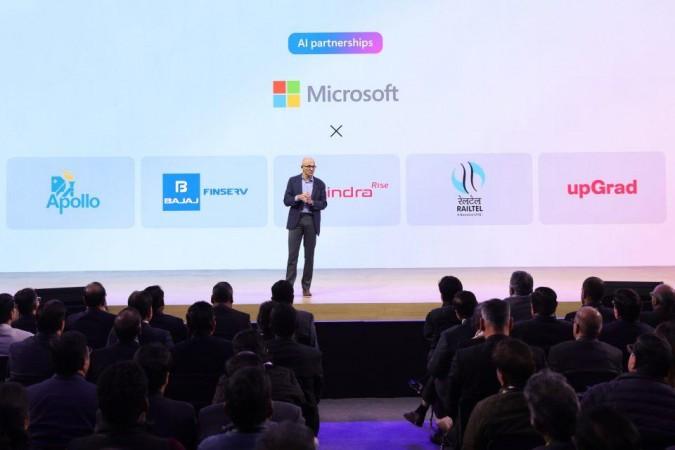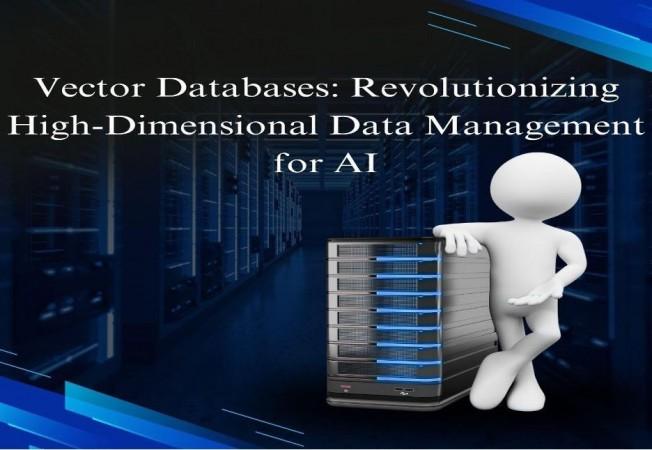ASUS today unveiled a lineup of cutting-edge AI-powered products at its “Always Incredible” virtual launch event for CES 2025. Driven by its vision of Ubiquitous AI. Incredible Possibilities and a strong commitment to sustainability, ASUS introduced a wide range of innovations that seamlessly blend power, creativity, and environmental responsibility.
Building on over 35 years of expertise, ASUS presented diverse AI-enabled products that push the boundaries of innovation and highlight its transformation into a comprehensive AI company. From ultraportable laptops with advanced AI experiences to enterprise solutions optimised for peak productivity and compact computing systems, the ASUS CES 2025 portfolio is crafted to empower individuals and organisations alike.
“ASUS is entering an exciting chapter focused on making AI-driven technology more accessible and impactful,” said Samson Hu, ASUS Co-CEO. “This year, at CES 2025, we’re taking our commitment to democratising AI further by being one of the first brands to offer a line of Copilot+ PCs that promote exceptional value and outstanding innovation. Ultimately, our solutions are always designed to enhance user experiences for everyone, from individual users to enterprises.”
“Copilot+ PCs are the fastest, most intelligent, and secure Windows PCs ever built, with AI experiences that inspire productivity and creativity,” said Mark Linton, Vice President of Device Partner Sales at Microsoft. “It’s an exciting time for Windows 11, our partnership with ASUS, and the expansion of its Copilot+ PC portfolio. As we approach the end of support for Windows 10, now is the perfect time to upgrade to a new Copilot+ PC, like the all-new Zenbook A14 or Vivobook 14/16.”
The array of groundbreaking solutions showcased during the event included the world’s lightest Copilot+ PC, the Zenbook A14, which features cutting-edge AI experiences and an all-new Ceraluminum™ chassis. ASUS also introduced the high-quality yet affordable Vivobook 14/16 laptops, designed to bring AI within reach of everyone. These ultraportable Copilot+ PCs redefine what’s possible, offering longer battery life, AI features, and an enhanced user experience.
In the commercial space, ASUS has redefined performance benchmarks with the ExpertBook B5, a laptop engineered to optimise business productivity. With the latest Intel® Core™ Ultra processors (Series 2), customisable configurations, and efficient thermal management, the B5 blends portability with power to meet evolving enterprise needs.
The ExpertBook B5 will also feature the Digital Product Passport (DPP), which ASUS is debuting in its commercial Windows 11 Pro PC lineup. The innovative feature goes beyond standard sustainability practices, serving as an all-in-one information resource that promotes transparency, supports ecofriendly practices, and provides product lifecycle data to foster a circular economy.
Catering to enterprise users who need more power is the ExpertCenter B900 Series – the first commercial AI desktops from ASUS. Equipped with Intel’s first AI desktop processors, the Intel Core Ultra 200S, these devices are designed to tackle the most demanding professional workloads. ASUS also introduced its latest lineup of next-generation AI Mini PCs, including the latest Intel-equipped ASUS NUC 15 Pro series and the ASUS ExpertCenter PN54, the first and only AMD-powered ASUS AI Mini PC. These devices deliver unmatched AI-powered performance and modular upgradability, designed to fit seamlessly into any environment.
Attendees at the CES event in Las Vegas can experience all these innovations firsthand. The products featured during the virtual launch event, including those in the separate Republic of Gamers (ROG) CES launch event, will be available for an exclusive hands-on experience at The Venetian Expo, Meeting Room #3102, from January 6 to January 9, 2025.
Visitors can also explore a wide range of other ASUS solutions, including the newest AI PCs, peripherals, displays, phones, motherboards, networking devices, and graphics cards.
Zenbook A14: The world’s lightest Copilot+ PC
During the launch event, ASUS introduced the ASUS Zenbook A14 (UX3407), the product line’s first Qualcomm® Snapdragon® model, which combines a minimalist aesthetic with advanced performance. Weighing under 1kg, the Zenbook A14 is the world’s lightest Copilot+ PC, making it the best everyday companion for the modern commuter.
The laptop features a high-capacity battery of up to 70Wh, boasting over 32 hours of battery life, allowing users to remain productive throughout the day. For the first time in the Zenbook series, the entire chassis – from the lid to the keyboard frame and bottom case – is crafted from Ceraluminum. This innovative, ASUS-exclusive material is a high-tech ceramic that offers durability and protection against wear, scratches, and fingerprints, making maintenance effortless.
Equipped with the latest Snapdragon X Series processors with a Qualcomm Hexagon™ NPU delivering up to 45 TOPS, the Zenbook A14 delivers an enhanced Copilot+ experience. Users can enjoy seamless capabilities with AI features like Live Captions, Cocreator in Paint, Generative Fill in Paint, Restyle Image and Image Creator in Photos, and super resolution in Photos, with more features to come such as Recall (Preview), Click to Do (Preview)3, and improved Windows Search3.
The dual fan design maximises thermal performance, ensuring efficiency during demanding tasks. Additionally, enhanced privacy features, such as adaptive lock and multi-person detection, provide an extra layer of security, while a full range of I/O ports ensures connectivity for all essential devices. The Zenbook A14 offers the ultimate combination of power, portability, and smart technology for US$899, perfectly catering to the needs of today’s users.
Vivobook 14 and 16: AI laptops for everyone
The Vivobook 14/16 (X1407QA/X1607QA) Copilot+ PCs offer a powerful upgrade for users seeking enhanced productivity, intelligence, and security – all at an exceptional value. Equipped with the super-efficient Snapdragon X processor that delivers 45 NPU TOPS of AI processing power, these laptops offer a 44% performance boost over the previous generation and provide up to 19.8 hours of battery life. Seamless connectivity with Microsoft Phone Link and Snapdragon-powered devices ensures a smooth experience for both work and leisure.
AI-enabled features elevate the Vivobook 14/16, offering dynamic and intuitive ways to create and stay organised. Users can unlock creativity using tools like Cocreator in Paint to refine artwork in real time, and Generative Fill and Erase for effortless photo edits. The ASUS-exclusive StoryCube application automatically categorises files based on content for better organisation, while Live Captions provide real-time, accurate subtitles to bridge language barriers.
Security is a top priority and the Microsoft Pluton security processor offers additional protection against threats. The AI Camera enhances security by detecting the user’s presence and locking the device when they step away, which works with Adaptive Lock and Adaptive Dimming to conserve battery life and maintain privacy. Built with a stylish design and military-grade durability, these laptops also feature a comprehensive array of I/O ports, including two USB4 Type-C, two USB 3.2 Gen1 Type-A, HDMI, and an audio combo jack – facilitating effortless connectivity.
Available in Cool Silver and Quiet Blue, as well as Platinum Gold for the 14-inch models, the Vivobook 14/16 appeals to users with diverse tastes. Starting at just US$699, the Vivobook 14/16 offers an ideal opportunity to upgrade to a smarter, more secure, and more efficient device.
ExpertBook B Series: Redefining enterprise laptops
The ASUS ExpertBook B5 (B5405/B5605) and ExpertBook B3 (B3405/B3605) set a new benchmark for enterprise laptops by merging unmatched customisation, extensive security features, and superior performance. Designed for the government, education, and corporate sectors, these laptops offer flexible configurations with up to Intel Core Ultra processors (Series 2), ensuring durability and a user-friendly experience.
Featuring Intel vPro® CPU customisation options tailored to large-scale enterprise requirements and upgradable components, including dual SSD and SO-DIMM slots, the ExpertBook B series easily adapts to changing business demands. Businesses can choose from up to three generations of Intel CPUs, up to 64GB DDR5 RAM, and adaptable SSD configurations. The four-row number pad and enlarged touchpad on the 16-inch models of the ExpertBook B5 and B3 enhance usability, while optional 5G support on the B3 ensures mobile conferencing convenience.
Security is ensured with dual BIOS, Intel vPro, discrete Trusted Platform Module (TPM), and NIST SP 800-155 compliant BIOS recovery, providing enterprise-grade protection for sensitive data. Additional features like ASUS Business Manager and ASUS Control Center streamline IT management. The low-resistance airflow cooling system reduces fan noise and maximises thermal efficiency, extending the device lifespan by 40% compared to the previous generation or consumer-standard solutions, without sacrificing performance.
In a significant sustainability move for the company, ASUS has introduced the Digital Product Passport (DPP) to its commercial PC line, beginning with the ExpertBook B series. This initiative highlights the commitment ASUS has to introducing circular economy features within the product life cycle, while also aligning with global trends and regulations, including the European Green Deal and TCO 10 standards. The DPP enhances product transparency and longevity by offering detailed specifications, repair histories, and recycling information. It also provides carbon footprint and lifecycle data to help consumers and businesses make eco friendly choices.
By equipping customers with actionable insights, ASUS not only furthers corporate sustainability objectives but also fosters responsible usage, contributing to a greener, more incredible world. Moreover, with EPEAT registration and compliance with regulations such as RoHS, the ExpertBook B series is ideal for environmentally conscious enterprises.
ExpertCenter B900: Business Ready AI Desktops
The ASUS ExpertCenter B900 (B900MF/B900SF) series are the first ASUS commercial AI desktops. Equipped with the Intel Core Ultra 200S series – the chipmaker’s first desktop AI processors – they deliver exceptional performance and position the system as a leader in AI-enabled desktops. With extreme processing capabilities and a dedicated NPU for AI tasks, the ExpertCenter B900 ensures users can efficiently handle demanding applications.
Enterprise-grade security is a top priority, featuring support for Intel vPro® Enterprise, TPM 2.0, and BIOS/HDD passwords. Additionally, a Kensington Security Slot further enhances physical security, while military-grade durability compliant with MIL-STD-810H standards ensures reliability in challenging environments.
The ExpertCenter B900 also offers a comprehensive solution for manageability through MyASUS, ASUS Control Center, ASUS Business Manager, and ASUS BIOS – all designed to streamline IT management and support. Its tool-free design ensures easy upgrades and maintenance, allowing organisations to easily adapt their systems to evolving business needs. This desktop not only provides competitive specifications but also best-in-class expandability, making it a reliable choice for enterprises looking to leverage AI technology while ensuring security and manageability.
ASUS NUC Series: AI-optimised performance in a compact form
ASUS has elevated compact, AI-enhanced computing with the NUC 15 Pro Mini PC. Equipped with the Intel Core Ultra 9 processor (Series 2) and featuring Intel AI Boost, the NUC 15 Pro combines superior performance with a space-saving design, optimal for high-demand business environments. Designed for integration efficiency and effortless connectivity, it offers ultra-fast Wi-Fi 7 and Bluetooth® 5.4 to support AI-optimised businesses. Additionally, ASUS Power Sync enables users to simultaneously power on/off the NUC 15 Pro and compatible ASUS monitors, creating a more integrated, energy-efficient workspace.
Enhanced with tool-less upgradability and Intel vPro technology for secure, remote management, this device provides a comprehensive solution for enterprises aiming to streamline IT infrastructure while maintaining robust data security. With support for up to four 4K displays, a power-conscious design, and military-grade durability, the NUC 15 Pro delivers impressive visual and productivity capabilities in a minimal footprint.
For those seeking heightened performance, the NUC 15 Pro+ features an advanced Intel Core Ultra 9 processor (Series 2) and supports up to 96GB of DDR5 RAM, delivering peak AI-driven power. Enhanced cooling technology supports high-demand workloads, ideal for professionals needing continuous reliability and speed in a compact format.
The ASUS NUC 14 Pro AI+ model introduces a unique design element with a multi-colour E-Ink display and voice command capability, while also delivering advanced graphics through its Intel Arc™ GPU – making it a perfect choice for settings where both functionality and visual appeal are priorities. It also excels in AI performance, featuring an Intel Core Ultra 9 processor (Series 2) that can achieve up to 120 total platform TOPS.
ASUS ExpertCenter PN54: Compact yet powerful AI-powered mini PC
The ASUS ExpertCenter PN54 Mini PC revolutionises compact computing, offering high-level AI performance in an ultra-compact 0.5L chassis. Powered by AMD’s latest Ryzen™ AI 7 350 processor with 45+ NPU TOPS, the ExpertCenter PN54 addresses everyday computing challenges with intelligent adaptability for productivity, creative work, and entertainment. It delivers robust AI acceleration and exceptional multitasking capabilities, ideal for diverse needs from content creation to gaming.
Packed with six USB ports, dual 2.5G LAN ports, and Wi-Fi 7, the ExpertCenter PN54 provides rapid connectivity and flexibility for modern digital ecosystems, transforming into a central hub capable of supporting multiple peripherals and fast data transfers. Designed for futureproofing, its tool-less chassis enables users to effortlessly upgrade storage and memory, ensuring this powerhouse Mini PC evolves alongside technological advancements. The ASUS ExpertCenter PN54 is crafted for those seeking high performance, connectivity, and a scalable solution in a compact form factor.














